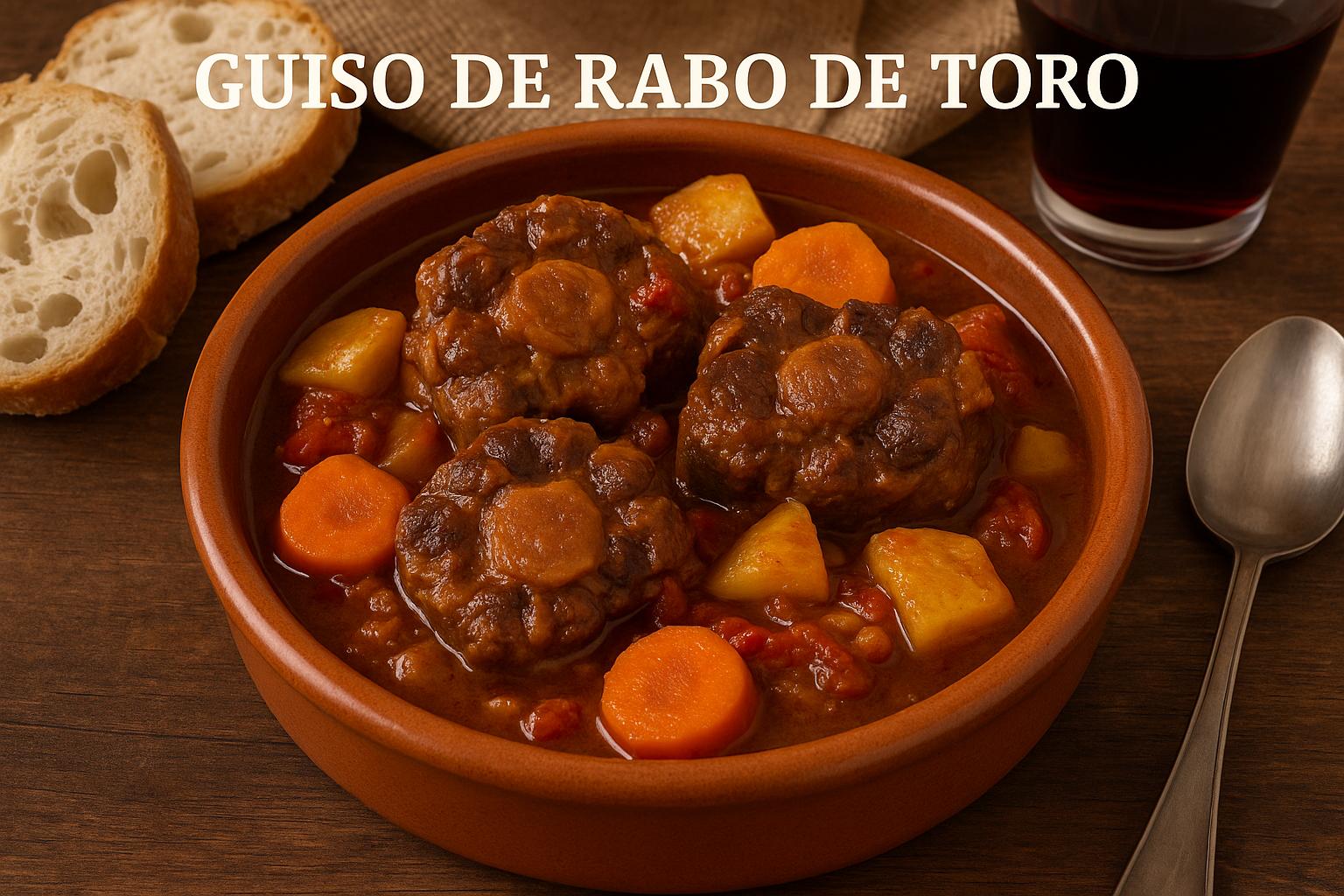
Guiso de rabo de toro, commonly known as oxtail stew, is a remarkable testament to the rich culinary history of Spain, specifically rooted in the areas of Andalusia and Madrid. This hearty dish has stood the test of time, evolving from its ancient beginnings with a narrative deeply interwoven with notable aspects of Spanish culture, such as bullfighting. Originally created using the tails of wild bulls, this dish has transitioned over time to utilize oxtails from domestically raised cattle, but it remains an indispensable part of Spain’s gastronomic repertoire.
The history of oxtail stew can be traced back to Roman times, signaling the dish’s seasoned lineage. However, it wasn’t until the 16th century that it began to gain traction as a distinctive aspect of Spanish cuisine. During this time, bullfighting emerged as a cultural phenomenon in Spain, and the aftermath of these events often saw the bulls’ meat being distributed to locals. The oxtails were typically handed over to butchers, who ingeniously crafted a stew that transformed these less-demanded parts into a celebrated culinary masterpiece. The slow, deliberate cooking process not only made the tough meat tender but also allowed the stew to become infused with rich flavors, capturing the hearts and taste buds of many.
The primary ingredient that defines guiso de rabo de toro is the oxtail itself. When cooked, oxtail emits a gelatinous quality that is vital to the stew’s lush consistency. Alongside oxtail, a variety of ingredients combine to create a medley of flavors:
Onions: These vegetables provide a subtly sweet foundational layer, crucial for balancing the dish’s more robust flavors.
Garlic: Known for its strong flavor, garlic complements the richness of the oxtail.
Carrots and Celery: These aromatic vegetables contribute a delicate balance of perfume and earthy undertones that meld beautifully with the other ingredients.
Tomatoes: Tomatoes introduce necessary acidity and sweetness, cutting through the dish’s richness to elevate its complexity.
Red Wine: Used frequently to deglaze the pan, red wine not only augments flavor but aids in forming a luscious, delectable sauce.
Spices and Herbs: Generous pinches of bay leaves, black pepper, and thyme form a spice trio that enhances the depth and character of the stew.
Creating guiso de rabo de toro is a process demanding patience and attention to detail, particularly because of the nature of the main ingredient. The process begins with carefully browning the oxtails, an essential step invoking the Maillard reaction—a chemical process that intensifies the meat’s natural flavors and imparts a pleasing brown crust. Once browned, the oxtails are gently introduced into the stew, where they undertake a long simmer over several hours.
This slow-cooking phase is crucial: it permits the connective tissues in the oxtail to dissolve into gelatin, producing a tender, sumptuous meat that practically melts in the mouth. The sauce surrounding the meat also transforms during this time, thickening into a rich, velvety concoction that’s deeply imbued with the varied flavors of the stew’s ingredients. The result is a culinary piece de resistance that combines texture and taste in an unforgettable manner.
To Spaniards, guiso de rabo de toro represents more than an enjoyable dish; it is a piece of culinary heritage echoing the communal traditions of Spain’s past and present. Often featured at local festivals and family gatherings, the dish acts as a vessel of cultural expression and societal bonding, facilitating shared experiences around the dinner table.
Moreover, oxtail stew has transcended its modest origins to achieve gourmet status. High-end restaurants increasingly feature the dish, reflecting Spain’s ongoing penchant for elevating traditional comfort foods into culinary art forms. This transformation underscores a larger trend within cuisine where the timeless appeal of traditional dishes, such as this stew, is warmly embraced by modern chefs and food enthusiasts alike.
As an emblem of Spain’s culinary legacy, guiso de rabo de toro not only highlights the rich, robust flavors inherent to Spanish food but also conveys the historical and cultural stories interwoven within its creation. It is a dish that honors the past while being celebrated in contemporary contexts—a true testament to its enduring allure and significance across generations.
For those who seek deeper insight into Spain’s flavorful culinary traditions, the Spanish Tourist Office offers resources and information that provide additional layers of appreciation for this and other traditional dishes. These steamed culinary narratives share a taste of history, allowing anyone interested to partake in an authentic exploration of Spanish culture through its rich food heritage.